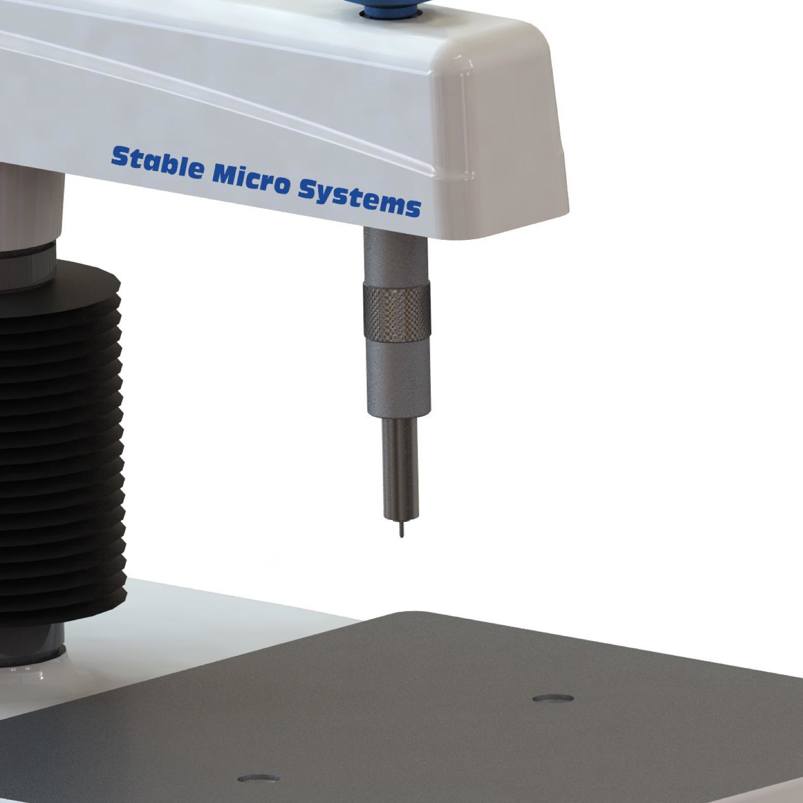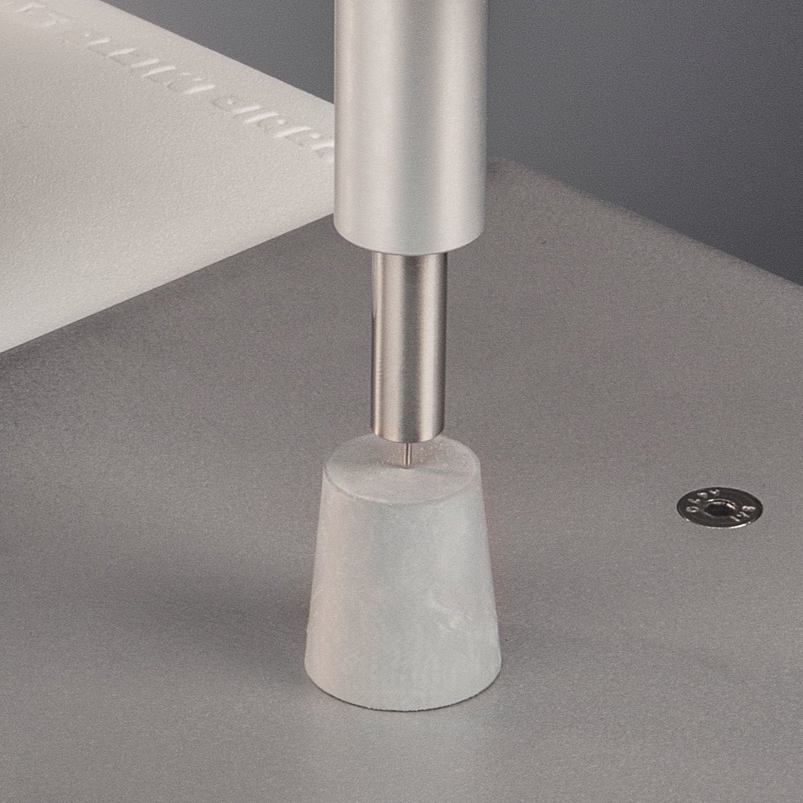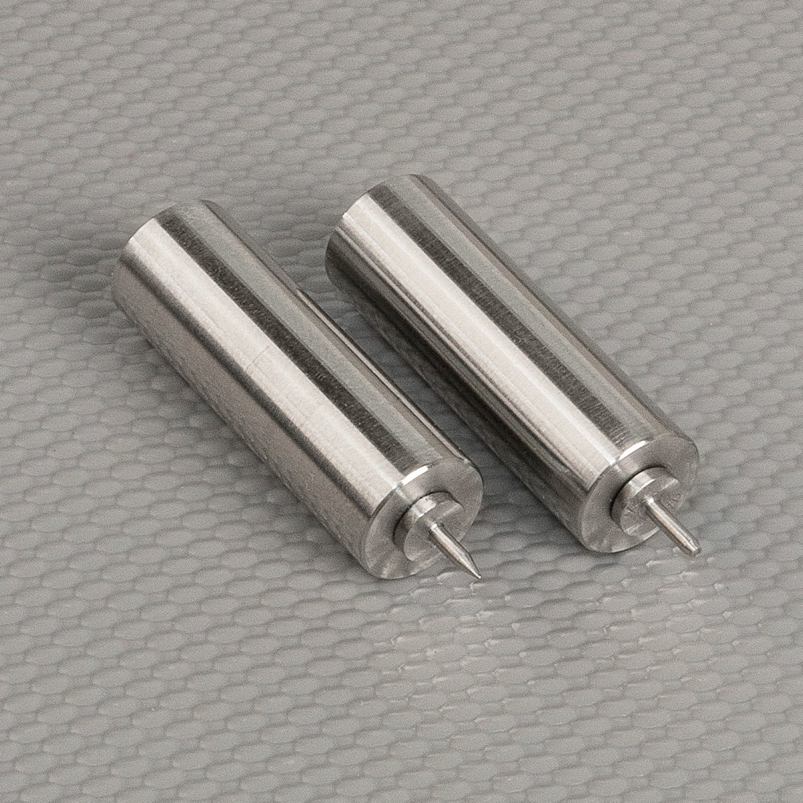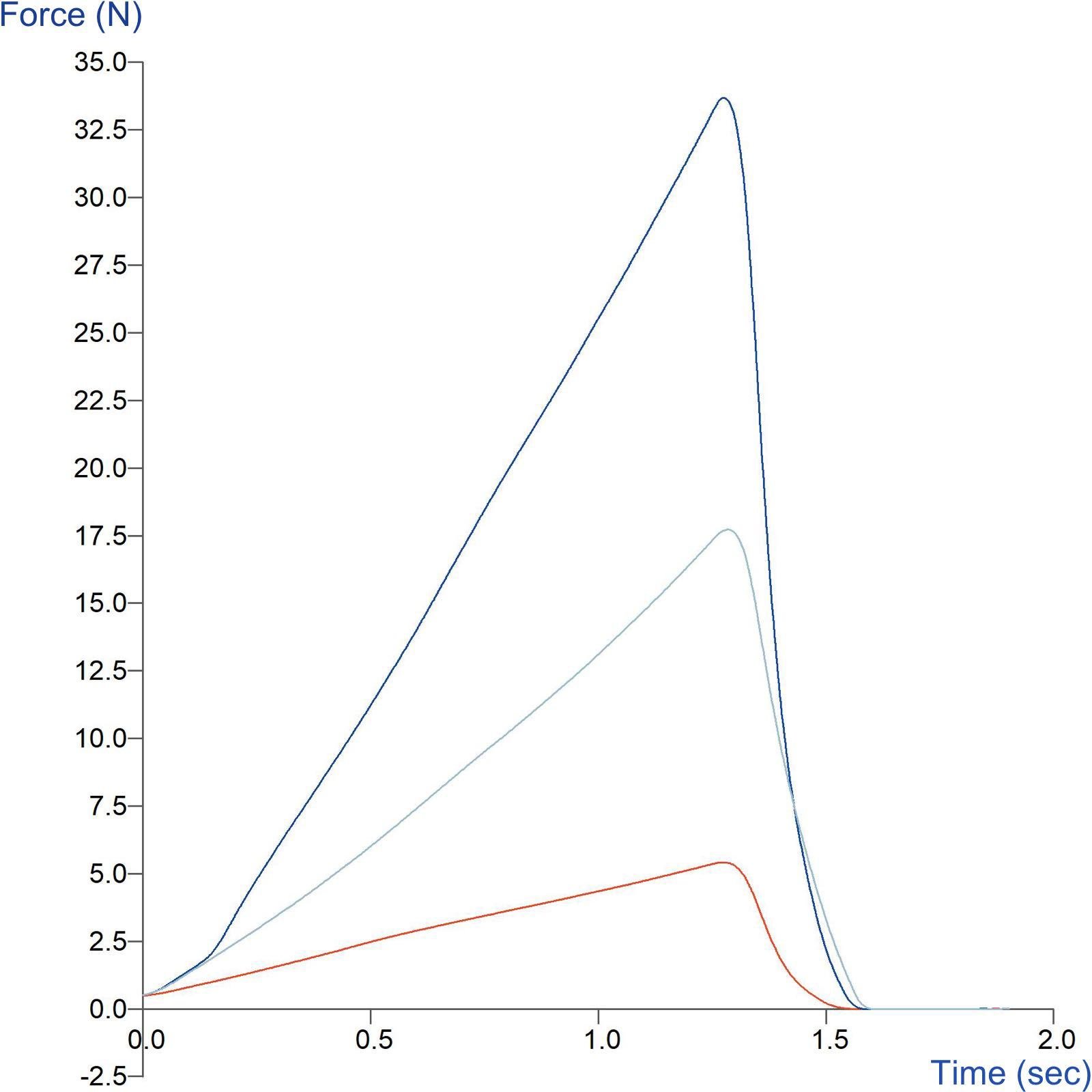Product overview
Shore durometers are used to determine indentation hardness of materials by using a measurement of resistance to deformation. A and D are the two most commonly used scales and have slightly different geometries. These probes are generally used as an empirical test for quality control as well as research and development rather than the investigation of a material’s properties. It is attractive for these purposes as it is a quick test to perform, and the hardness scale is easy to understand (although cannot be equated to other indentation hardness measurements).
The majority of Shore hardness testing is carried out on standard and vulcanised rubber, thermoplastic elastomers, gels and plastics. Before measuring any of these materials, it is necessary to refer to Shore reference tables, as some materials are better suited to Shore methods other than A and D.
Ideal sample form
Solid material.
Benefits and limitations
- Easy and quick: The test is relatively straightforward and can provide results in a matter of seconds.
- Non-destructive: The test only leaves a small indentation, which usually doesn't damage or detrimentally affect the sample.
- Variety of scales: There are different Shore hardness scales (A, D, O, etc.) to cater to various materials ranging from very soft to hard.
- Surface dependency: The accuracy of the test can be influenced by surface smoothness. A very rough surface can lead to inaccurate results.
- Thickness dependency: The sample material should have a minimum thickness to avoid the underlying surface from influencing the reading.
- Not suitable for very hard materials: For materials harder than those on the Shore D scale, other testing methods might be more appropriate.
Technical information
Installation
Full installation instructions are provided within the Education Zone of the latest Exponent/Connect software version and on the technical information sheet accompanying this product.
Chemical compatibility
Stable Micro Systems probes and attachments are commonly made from four materials: anodised aluminium (AA6082 T6), stainless steel (316 T), Delrin (acetyl copolymer) and Perspex (polycarbonate).
In general use, probes and attachments made from these materials will be suitable for testing food products and inert non-food materials.
The four materials listed above are not universally resistant to all types of chemicals and as such the compatibility of the probe/attachment material with the product (to be tested) must be established to prevent damage to the probes and attachments. If the compatibility of the product with the probe is unknown to the customer then the chemical information about the product (Material Safety Data Sheet or Product Data Sheet) should be submitted to Stable Micro Systems. Stable Micro Systems will then assess the suitability of the probe/attachment material for use with the product and advise accordingly. If this advice is not sought then Stable Micro Systems will not accept liability for probes/attachments damaged by chemical attack from the product being tested.
Cleaning and maintenance
All probes and attachments may be cleaned in warm (or hand hot) water using a mild detergent. A soft brush may be used but abrasive cleaning aids should be avoided. Stable Micro Systems products should not be microwaved or cleaned in a dishwasher.
Screw threads should be lightly lubricated after drying using a light lubricant, e.g. petroleum jelly, mineral oil. This will aid the fitting and unscrewing of the item. Each component of a probe or attachment should be wrapped separately when stored, to avoid scratching or chipping. This will safeguard against any unnecessary damage to the accessory.




